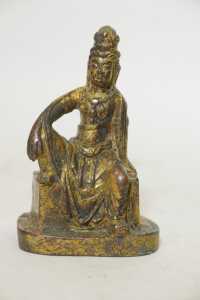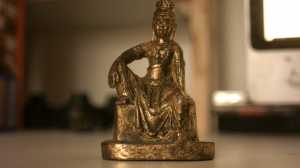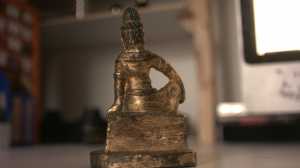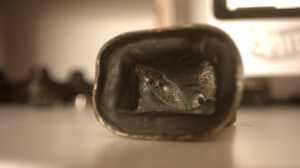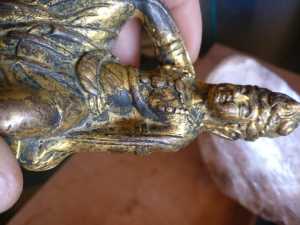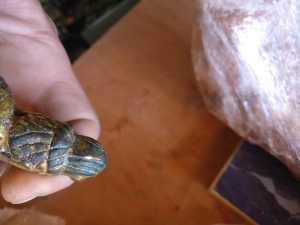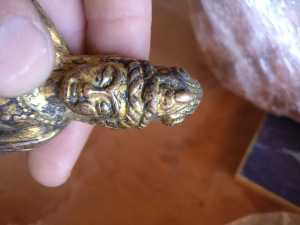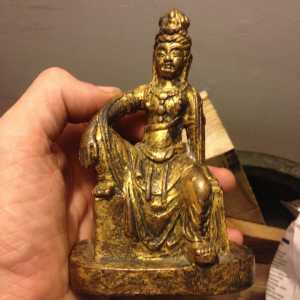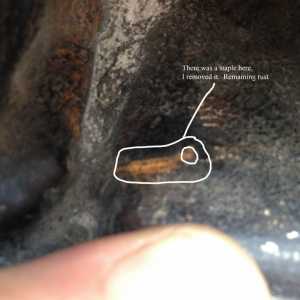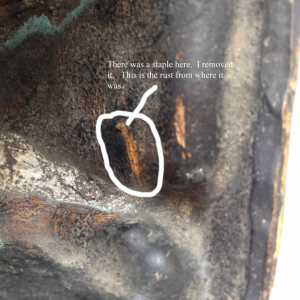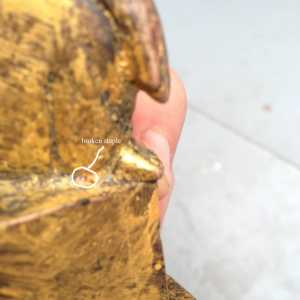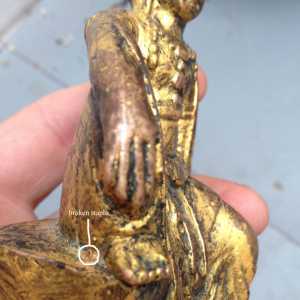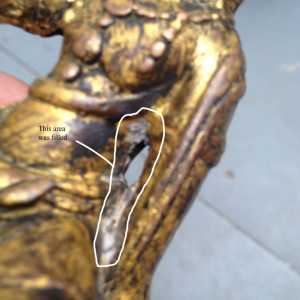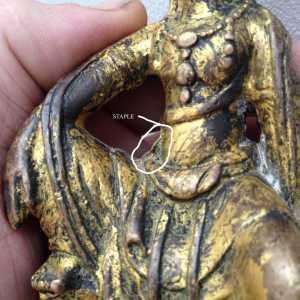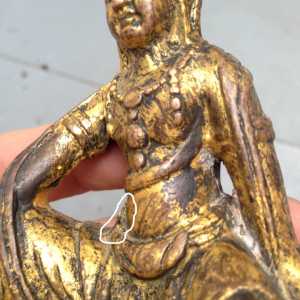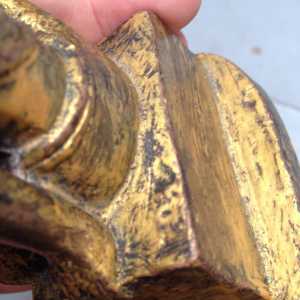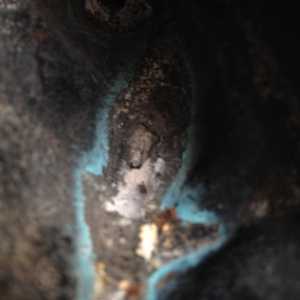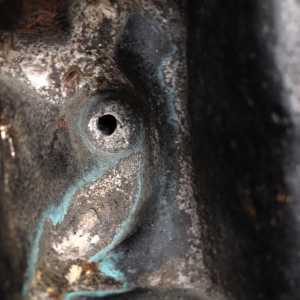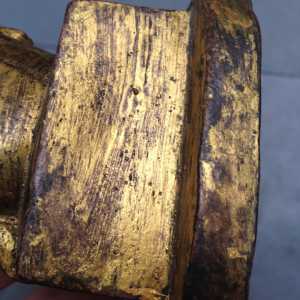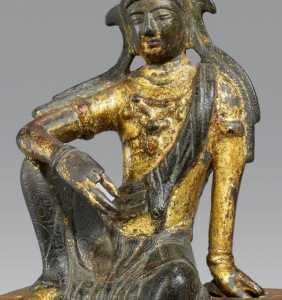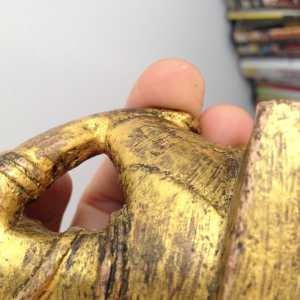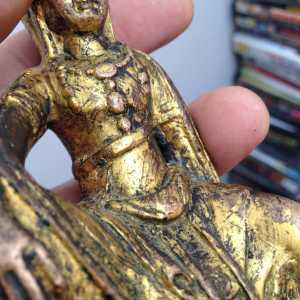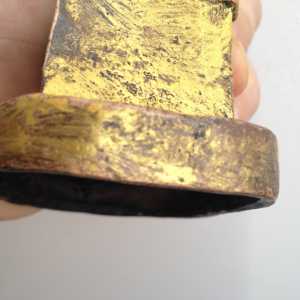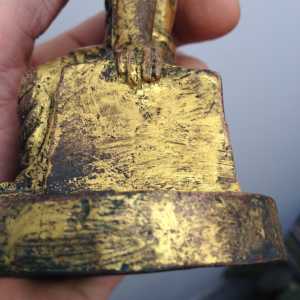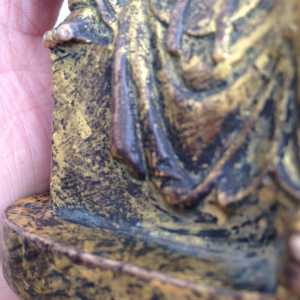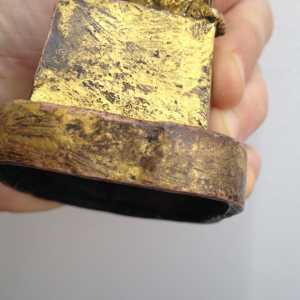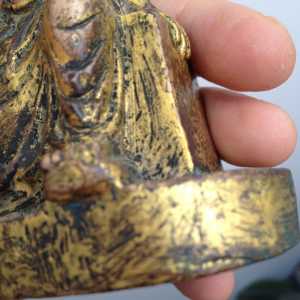The Chinese and Asian Art Forum. For Fans, Collectors and Dealers.
 Basic Rules For the BidAmount Asian Art Forum: Talk about whatever you want. You can even discuss and offer things that are for sale if they are authentic. Maximum image file size per post is 2 MB. Images of 700pxl x 700pxl are optimal if saved at a medium resolution. Be respectful of others and enjoy yourself. Click the YouTube link for a brief tutorial on using the forum. You can also EMBED Videos by cutting and pasting from You-Tube, Vimeo etc.
Basic Rules For the BidAmount Asian Art Forum: Talk about whatever you want. You can even discuss and offer things that are for sale if they are authentic. Maximum image file size per post is 2 MB. Images of 700pxl x 700pxl are optimal if saved at a medium resolution. Be respectful of others and enjoy yourself. Click the YouTube link for a brief tutorial on using the forum. You can also EMBED Videos by cutting and pasting from You-Tube, Vimeo etc.
NOTE: To post an item or add a new post, click open the category title from the FORUM LIST, and CLICK the Blue ADD TOPIC button.
Hello,
I have had this little bronze for a while now. I've kept it because I think it's quite charming. It's in the style of a song guanyin, pocket size, fit's in the hand nice and neatly. The space between the right arm and body was filled and painted over in a different gold colour, I took out the filling (see last photo).
Does anyone have a good knowledge of bronzes like these? Could it be Song or is it perhaps later?
thanks in advance,
Tom
Hi Thomas,
Whilst I am by no means a expert on chinese bronzes I feel your example is a modern interpretation.
Of particular concern is the base with that smooth looking inside. My understanding is that the older ones were more roughly done on the inside. The later 20th century ones were more smooth.
Perhaps if @xin_fawis logs in he can give you his opinion. He is very knowledgeable about bronzes.
Mark
Mark seems to have picked up on the problem area… the inner base.
I see remnants of sand. Early techniques used clay molds, so there should be no sand.
Very interesting. Can you post more better photos? I also need detail photos from the inner side. Any nail like rust spot inside?
www.Wyssemaria-Art.com
[email protected]
Instagram: @wyssemaria_art
@xin_fawis Hi Xin, Yes strangely there is a staple or two, going through the bronze. One seemed to be connecting the figure to the base. The staple broke off and has left a rust mark. Is this a repair? how can a staple penetrate bronze?
many thanks,
Tom
Hi Tom,
Iron pins or nails are used as spacer for casting. It's a very traditional method. You can often find this kind of rust residue inside the bronze figure. Of course forgers know that too. They also copy this feature to fool collectors.
The quality of the bronze is good, but the gold gilt is strange. Also the shape of the base is unusual.
You have a very interesting piece and I'm interested in studying it. It will be a big pleasure for me, if you can share more (HD) photos with us/me. I want to see more details of it.
Thank you 🙂
Xin
www.Wyssemaria-Art.com
[email protected]
Instagram: @wyssemaria_art
@xin_fawis Thanks Xin, for taking an interest. There is something that seems special about it. However I am not an expert on these. Here are some more photos of the areas that had or have staples. and some other photos. The only thing that seems a bit unusual is the rendering of the gilt. The gold seems to have lines in it (especially on the base), that could be worn down brush marks? or perhaps it's just the texture of the bronze, that has lines in it and the proud areas have been worn away? Traditionally they would have mixed gold with mercury, then heated it to evaporate the mercury leaving the gold finish, I think? so I'm not totally sure about the texture of the gilt. But it seems a good colour. The pitting looks right. The green patination looks right. Here's a link to one from the Met Museum.
https://www.metmuseum.org/art/collection/search/54083
This is the closest I can find to the gilt gold texture:
Hi Tom,
I talked to a friend who is an expert of Buddist art. We doubt the authenticity of this bronze figure. A lot of details are not right. You mentioned the gilt method with mercury. It's correct. But the gilt or gold colour on this figure is not done with the traditional method. You also mentioned the texture on the back. That's the hint. About the casting quality, the inner side doesn't have the right texture. Usually the inner surface is cleaner (but not smooth) and has a special texture which I'm not able to decribe it due to my limited language skills. Sorry for that. I saw the iron spacer staples on your photos. Outside the figure these staples are always smoothed. Mostly you find small smoothed points (round or square shape) on the surface or nothing, but not like the ones on yours. It is just our opinion. You may find someone who can tell you more about it.
Hope these information can help you.
Kind regards,
Xin
www.Wyssemaria-Art.com
[email protected]
Instagram: @wyssemaria_art
And another hint. The shape of the base is very odd. Mostly there is no such box like base directly casted together with the figure. You posted a good example from Lempertz. You see there is no such base, only the Guanyin.
www.Wyssemaria-Art.com
[email protected]
Instagram: @wyssemaria_art
www.Wyssemaria-Art.com
[email protected]
Instagram: @wyssemaria_art
@xin_fawis Thanks Xin for your help
@xin_fawis How old do you think it could be. I've been looking for similar examples with a box base. Here are a few:
https://www.sothebys.com/en/auctions/ecatalogue/2015/important-chinese-art-n09477/lot.375.html
https://www.sothebys.com/en/auctions/ecatalogue/2011/arts-dasie/lot.44.html
https://www.metmuseum.org/art/collection/search/65397
You sometimes see lines in the gilt gold in bronze Tara's. I'm wondering if it's possible if its the tooling marks, that have worn to reveal the ridges in the bronze, rather than it being brush marks ( it doesn't really look brushed, more the texture of the bronze, the lines are too deep). There are also areas with a more uniform texture, such as around the knees. Here are a few examples of Tara's with a similar texture:
https://www.christies.com/lot/lot-5926167
https://www.christies.com/en/lot/lot-5473030
https://globalnepalimuseum.com/objects/a-gilt-bronze-figure-of-a-standing-tara/
The most convincing signs of age on the guanyin is the patina, the green areas around the hair. It looks authentic to me. your finger naturally rubs this area when you hold it in your hand, to support the head. The areas that are worn are consistent with how it sits in the hand, depending if it's held in the right hand or left hand. This is also convincing of age to me.
Seems Xin Fawis has left the building ...
@xin_fawis Here are some photos of the texture of the bronze / gilt. It looks like the lines aren't brush marks, but the texture of the bronze, so maybe tooling marks. Or perhaps deep scratches. I think it might be possible the gilt was applied using the mercury method, or the same method used on the gilt tara's in the link above.
Thanks for visiting "The BidAmount Asian Art Forum | Chinese Art"
If you sell on eBay, or have a shop feel free to post images and descriptions and links.
Check back often for discussion about the latest news in the Chinese art and antique world. Also find out about the latest Asian art auctions at Sotheby's, Christie's, Bonhams and Tajans.
Auction results for: fine porcelain, ceramics, bronze, jade, textiles and scholar's objects. As well as Japanese, Thai, Vietnamese and other Asian cultures.
Thank you,
Peter Combs
Topics and categories on The BidAmount Asian Art Forum | Chinese Art
Kangxi vases, Kangxi dishes and chargers, Kangxi ritual pieces, Kangxi scholar's objects, Qianlong famille rose, Qianlong enamels, Qianlong period paintings, Qianlong Emporer's court, Fine porcelain of the Yongzheng period. Chinese imperial art, Ming porcelain including Jiajing, Wanli, Xuande, Chenghua as well as Ming jades and bronzes.
The BidAmount Asian Art Forum | Chinese Art
A free Asian art discussion board and Asian art message board for dealers and collectors of art and antiques from China, Japan, Korea, Thailand, Cambodia, Vietnam and the rest of Asia. Linked to all of the BidAmount Asian art reference areas, with videos from plcombs Asian Art and Bidamount on YouTube. Sign up also for the weekly BidAmount newsletter and catalogs of active eBay listing of Chinese porcelain, bronze, jades, robes, and paintings.
The art of calligraphy - and for the ancient Chinese it certainly was an art - aimed to demonstrate superior control and skill using brush and ink. Calligraphy established itself as one of the major Chinese art forms during the Han dynasty (206 BCE - 220 CE), and for two millennia after, all educated men were expected to be proficient at it.
The Museum’s collections of Asian art span nearly five millennia and encompass the cultures of China, the Himalayas, India, Japan, Korea, and Southeast Asia. In 2007, the Museum launched an initiative to create dedicated galleries for the collection, beginning with a gallery for the arts of Korea ...
Chinese art is full of symbolism, in that artists typically seek to depict some aspect of a totality of which they are intuitively aware.
China Online Museum is the finest online museum of Chinese art. It features Chinese calligraphy, painting, ceramics, bronzes, carving, and other artworks.
Chinese Ceramics & Works of Art. Overview Upcoming auctions Contacts Auction results ... Christie’s sales of Chinese ceramics and works of art showcase centuries of Chinese history. Held throughout the year in London, New York, Paris and Hong Kong, they attract a wide audience of collectors and connoisseurs vying for pieces as diverse as ...
Explore Asian Art Week. Contact the Specialist Department. Chinese Paintings ... Senior Specialist, Head of Sale. [email protected]. Tel:+1 212 641 5760. Bid in-person or online for the upcoming auction:Fine Chinese Paintings on 10 September 2019 at New York. Bid in-person or online for the upcoming auction:Fine Chinese Paintings on 10 ...
Discover an abundance of must-see art from all corners of a vast continent at Christie’s NY Asian Art Week. From contemporary classical and Chinese paintings to works with exemplary provenance from the Art Institute of Chicago, our Rockefeller Paza galleries will be full of ancient treasures and contemporary masterworks in a salute to the vibrant arts of Asia.
Sold to benefit The Art Institute of Chicago’s Asian Art Acquisition Fund, the sale features 84 lots with a focus on Ming and Qing porcelains, and offers a rare insight into the taste for collecting Chinese ceramics and works of art in the Midwest from the end of the 19th century through the 1980s. Highlights include two Wanli wucai garlic-head vases, a Qianlong mark and period, blue and ...
Specialist, Chinese Paintings, Christie's London Dr Malcolm McNeill is a Specialist in Chinese Paintings at Christie’s, based in London. He previously worked as an assistant curator of the Chinese collections and the Victoria and Albert Museum in London, as a researcher at the British Museum, and as a translator and tour guide at the National Palace Museum in Taipei.
The Christie's Education 2020 Conference: The Chinese Art Market 18 Jun 2019 Christie’s Education is delighted to announce our first international academic conference in Asia which will take place in Hong Kong from 26-27 November 2020 at the Hong Kong Convention and Exhibition Centre and will run in parallel with Christie’s Hong Kong Autumn Auctions.
The summer Chinese Art sale in Hong Kong will feature works of art from several private collections, including Qing porcelains and textile from the collection of the legendary Chinese art dealer A. W. Bahr (1877–1959), fine gilt bronze Buddhist sculptures from an old Hong Kong collection, an East Asian collection of Qing dynasty wine cups and jades, and a Japanese collection of Song ceramics ...
Sotheby's Chinese Works of Art Department holds two auctions each year in London, New York, Hong Kong and Paris.
Chinese Art - View Auction details, bid, buy and collect the various artworks at Sothebys Art Auction House.
With more than 340 Chinese works of art dating from the Neolithic to the Republic periods, highlights of this sale include a selection of Qing Imperial monochromes from the collection of Arnold and Blema Steinberg, early ceramics from the Art Institute of Chicago and Chinese porcelain and works of art from the collection of Henry Arnhold.
Results: Sotheby's Asia Week achieved $52.4 million in six strong auctions, exceeding pre-sale estimates. With 76.5% of lots sold and 60.3% of lots surpassing high estimates, the Asian art sales at Sotheby's indicate continued collector interest in the finest works of art from China, India and and the Himalayas.
Today's sale of Important Chinese Art will proceed as planned with sessions at 10 AM and 2 PM EDT. Sotheby's will be monitoring the weather conditions throughout the day and will be available to coordinate alternative bidding options should conditions make it difficult for clients to attend the auction in person.
Bonhams Chinese Art department is renowned for offering the finest works of art representing the richness and breadth of China's artistic heritage, particularly Imperial porcelain, white and spinach green jades, cloisonné and Buddhist art. Specialised international auctions are held globally, including London, Hong Kong and San Francisco.
Bonhams : Chinese Works of Art We use cookies to remember choices you make on functionality and personal features to enhance your experience to our site. By continuing to use our site you consent to the use of cookies. Please refer to our privacy and cookie policies for more information.
Bonhams Fine Art Auctioneers & Valuers: auctioneers of art, pictures, collectables and motor cars. We use cookies to remember choices you make on functionality and personal features to enhance your experience to our site. By continuing to use our site you consent to the use of cookies. ... Chinese Art (US) General enquiries
Bonhams : Fine Chinese Art We use cookies to remember choices you make on functionality and personal features to enhance your experience to our site. By continuing to use our site you consent to the use of cookies. Please refer to our privacy and cookie policies for more information.
Bonhams Fine Art Auctioneers & Valuers: auctioneers of art, pictures, collectables and motor cars Bonhams : Asian Art We use cookies to remember choices you make on functionality and personal features to enhance your experience to our site.
Bonhams are international auctioneers of fine Chinese and Japanese art. We specialise in rare Imperial and Export Chinese ceramics and works of art, as well as Japanese ceramics, fine and decorative works of art from the Neolithic Period to the 20th century. View on map
Bonhams Fine Art Auctioneers & Valuers: auctioneers of art, pictures, collectables and motor cars. We use cookies to remember choices you make on functionality and personal features to enhance your experience to our site. By continuing to use our site you consent to the use of cookies. ... Asian Art Bonhams. Work. 22 Queen St.
